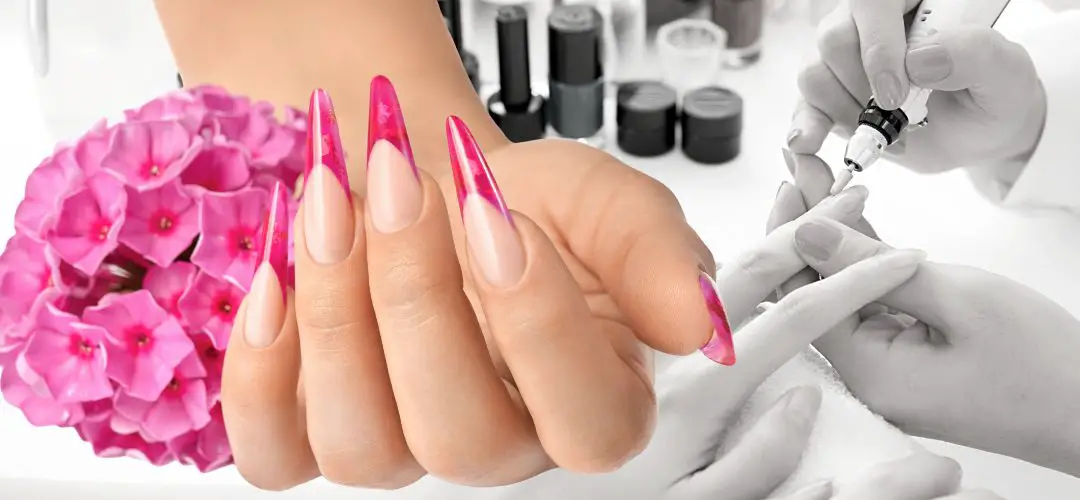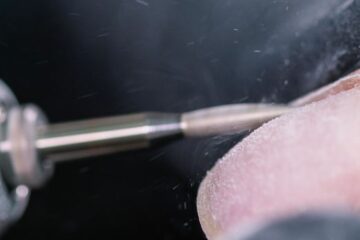Nail Drill Handpiece | Say goodbye to your traditional manicure routine and say hello to a world of possibilities with the nail drill handpiece. Whether you’re a professional or just getting into the game, this innovative tool is sure to take your mani-game to the next level. With its powerful motor and superior control, you can get that salon-style finish in no time. So what are you waiting for? Get ready to take your nails to the next level with a nail drill handpiece!
What is a nail drill handpiece?
Well, basically it’s a handheld device used to make precise and intricate designs on nails. It’s great for nail art professionals or those who are just starting out as it allows you to create detailed designs with ease and accuracy. With the help of this tool, you can go from amateur artist to professional-level designer in no time!
What makes this tool so special?
The nail drill handpiece isn’t your average manicure tool – it comes with some revolutionary features that make it stand out from the rest. For starters, its powerful motor allows you to work quickly and accurately while maintaining excellent control over your design. Additionally, its adjustable speed settings enable you to customize each design according to your needs. Plus, the ergonomic handle ensures that you can work comfortably for extended periods of time.

How does a nail drill handpiece work?
To get started, start by installing the handpiece (typically a 3-jaw chuck) into your drill. Ensuring a secure fit is important to ensure that the work you do is precise and accurate – if it feels like it’s slipping or not fitting securely, stop and re-adjust. Once the handpiece is firmly in place, it’s time to begin!
First, select your desired speed setting using either the dial on the back of the tool or its digital controls. Then insert your bit – this could be anything from an engraver to a polisher – into one of the three jaw chucks and give each screw a tight turn until it holds firmly in place. Finally, plug in your handpiece and you’re ready to go!
The handpiece is then used to make precise and intricate designs on nails. It functions by spinning the bit at high speeds, allowing you to make detailed cuts, engravings, or polish work quickly and accurately. As each design requires different settings and techniques, it’s important to adjust the speed setting throughout your work for the best results. For example, a slower speed is usually optimal for engraving while a higher setting may be necessary when polishing.
Using a nail drill handpiece can open up a world of possibilities when it comes to creating perfect manicures – from intricate designs to perfectly polished nails.
Can I use a nail drill handpiece on natural nails?
Yes, you can! With the right safety precautions in place – such as using a bit that is suitable for natural nails and choosing an appropriate speed setting – a nail drill handpiece can be used on natural nails.
Using a nail drill handpiece can help you get salon-quality manicures from the comfort of your own home. The key is to take your time and adjust your settings accordingly – depending on what type of design or polish you’re trying to achieve. With patience and practice, you can create stunning results with your nail drill handpiece!
Which type of motor is best for a nail drill handpiece?
Not all nail drill handpieces are created equal – there are a few different types of motors that can be used to power your tool.
The most common type is the AC motor, which uses alternating currents in order to create more torque and provide more control over the speed settings. This makes it ideal for precision work such as engraving or polishing nails. Additionally, AC motors tend to last longer than other types of motors, especially when used for extended periods of time.
Another option is the DC motor, which offers greater versatility as it can be used with both battery-operated and mains-powered tools. DC motors also produce less noise than AC models and offer smoother operation, making them great for detailed designs like swirls or paisley patterns. The only downside to these motors is that they usually don’t generate as much torque as AC motors, so they may not be ideal for more robust projects such as filing down nails.
Finally, the rotary motor is similar to the DC motor in terms of noise and overall operation but tends to produce a bit more torque than both AC and DC models. This makes it great for general filing tasks, although it won’t provide the same level of precision as an AC motor.
Is a nail drill handpiece easy to use?
Using a nail drill handpiece is actually quite easy once you get the hang of it. The key to success is to understand your tool and its settings, as well as practice using it until you become comfortable with the technique.
First, select the appropriate bit for your project – preferably one with a softer surface such as felt – then adjust the speed setting accordingly. As each design requires different settings and techniques, try not to keep the speed at one level for too long. For example, if you’re engraving a design then you may need to lower the speed in order for better control over detailed lines or curves. On the other hand, if you’re polishing nails then increasing your speed might be necessary for faster results.

What type of bits can I use with my nail drill handpiece?
Using the right bits with your nail drill handpiece is essential for achieving professional-looking results. There are a variety of different bits available, each designed to perform specific tasks like filing, engraving, or polishing.
Filing bits come in various shapes and sizes and can be used to shape nails prior to any further work. They include barreled bits which are ideal for filing down thick areas such as cuticles and cylindrical bits which create well-defined corners on square nails. Additionally, cone shaped and round tipped points can be used to refine edges and sculpt curved or almond shaped nails.
Engraving bits come in two main types – diamond coated and carbide coated – both of which are perfect for intricate or detailed designs like paisley patterns and swirls. Diamond coated bits are often preferred as they provide a smoother finish than the carbide counterparts, however they may require more frequent replacement due to their delicate nature.
Which is better, electric or cordless nail drill handpiece?
When it comes to choosing between an electric or cordless nail drill handpiece, the decision usually comes down to personal preference. Both types of tools offer great performance and versatility, with their main differences being in terms of power and portability.
Electric nail drills tend to be more powerful than cordless models and are ideal for larger projects that require a lot of force. They also have greater torque capabilities which make them perfect for filing down nails quickly and efficiently. However, electric drills must be plugged into a nearby outlet which may limit your mobility if you’re working away from home. Additionally, many electric drills generate more noise due to their higher speed settings so they may not be suitable for quieter environments.
Do I need to use a separate drill for different techniques?
No, you don’t need to use a separate drill for different techniques. A good quality nail drill handpiece can easily switch between different attachment heads and speed settings to suit whatever task you are performing.
For example, if you are polishing nails then you would need an abrasive head that is designed specifically for this purpose. Simply attach the head to your nail drill and adjust the speed setting accordingly. This same drill can also be used for filing down thick areas or shaping nails before further work has been done as well as engraving intricate designs in the surface of the nail plate.
When it comes to cutting acrylics or hard gels, however, it is best to use a dedicated cuticle or e-file bit. These bits are specifically designed to cut through hard materials with ease and come in a range of sizes to suit the job at hand. If you use a regular bit for this purpose, it will quickly become overheated or worn out due to the increased friction and effort involved.
By having the right attachments on hand, you can make sure that all of your nail treatments are performed with precision and accuracy. Whatever task you need to perform, always make sure that your drill is equipped with the correct head and speed setting beforehand so that everything runs smoothly without any hiccups! With proper care and maintenance of your handpiece, you’ll be able to achieve flawless results every time.
Can I use a nail drill handpiece for pedicures?
Yes, a nail drill handpiece can be used for pedicures. It is important to note that the same rules and precautions should be taken for pedicure treatments as for manicure treatments when using a nail drill handpiece. The speed should be adjusted depending on the task that needs to be done and the material being used.
When it comes to filing and shaping nails, an abrasive head attachment is best suited for this purpose. Start by gently filing away any uneven areas of the nail before buffing them down with a soft-bristled brush or buffer. This will help to create a smoother finish while ensuring your client’s comfort.
Conclusion | Nail drill handpiece
This article explains how to use a nail drill handpiece for manicures and pedicures. It outlines the different attachments and speed settings that should be used depending on the task at hand, with particular attention paid to using lower speeds when dealing with delicate areas such as cuticles or skin around the nail bed. The article also emphasizes the importance of proper care and maintenance of your handpiece, as this will help to ensure optimal results every time. With these tips in mind, you can create beautiful, safe treatments that both you and your clients will love!


